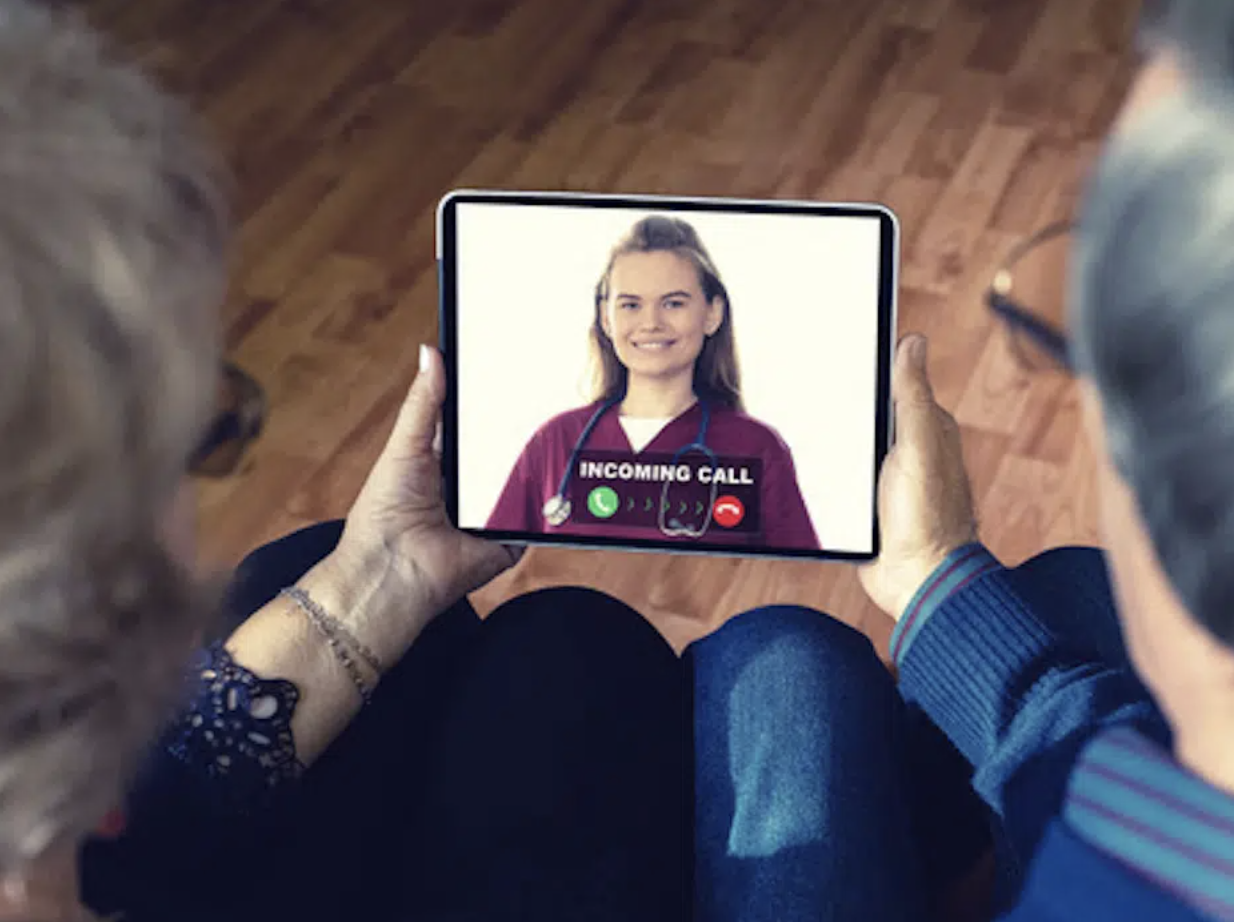Highlights
- The health landscape is evolving rapidly, and 2022 will see even more changes as the new normal takes shape.
- Technology has proven its importance in healthcare by facilitating communication, collaboration, and innovation amid a ravaging pandemic.
- With further disruptions on the way, providers must stay ahead of the emerging trends to survive.
🧑⚕️⚕️👨🏻💻 Did you know that collaboration-enabled care is a top priority among healthcare leaders? Grab our research report to get the whole story.
The pandemic dramatically disrupted the global healthcare sector. As patients flocked to care centers and resources began to stretch, providers had no choice but to rethink healthcare delivery models and proactively embrace digital transformation. 2021 came with its own hurdles, namely conflicting views on vaccination, new COVID variants, and overwhelmed hospitals struggling to get back to pre-pandemic routines.
Technology has proven effective at keeping healthcare resilient amid continuously evolving challenges. From cloud-based communication platforms to the Internet of Medical-Things, predictive analysis, and data sharing options, emerging technologies have given the world hope that recovery is not only possible but imminent.
Five healthcare trends for 2022 and beyond
Looking ahead, the health sector can expect even further disruption as the new normal takes shape. Below are five healthcare trends setting the scene for 2022 and beyond.
1. Virtual and hybrid healthcare solutions
Virtual health has had an increasingly critical role in care delivery in recent years. Today, more and more providers are embracing telehealth to help improve patient outcomes. With technology, practitioners can monitor patient progress and collect mountains of information remotely.
As healthcare steadily rebounds from the pandemic, many practitioners have virtual health expansion as an essential item on their 2022 agenda. Bringing telehealth to the mainstream will help improve the access and quality of patient care, reduce healthcare costs, and alleviate the burden on hospitals.
More interestingly, 2022 will bring more well-formed hybrid health solutions, which combine virtual care with in-person delivery. With on-site clinics expected to recover, traditional providers will be looking to partner with communications platform providers to implement hybrid solutions that offer multiple touchpoints on a single system.
2. Widespread use of data and analytics
The amount of data generated by patients, medical devices, care providers, and payers is growing rapidly. In response, many healthcare organizations are turning to advanced data analytics to turn this data into actionable insights.
With the industry steadily moving toward value-based healthcare models, care providers are keen on leveraging data to accelerate innovation, reduce risks, and increase patient satisfaction.
In 2022, data will continue to play a critical role within the healthcare sector. Thanks to advanced data management technologies and AI-driven analytics, more hospitals will be able to identify opportunities for improvement, measure results, and improve outcomes.
3. A sharper focus on interoperability
Data sharing among stakeholders has long been a significant challenge in healthcare. Although the ongoing shift to value-based care is increasing the rate of data generation, many providers, payers, and patients still struggle to access relevant information.
2021 has seen interoperability take center stage, thanks to an overwhelming push from regulators. The CMS Interoperability and Patient Access final rule, for example, gives stakeholders unprecedented access to patient data, eliminating duplicity and promoting faster and more accurate decision-making while encouraging patients to take more control of their health.
The focus on interoperability will become more urgent in the years ahead as health players race to implement systems that can bridge the gaps in data sharing. Comprehensive communication platforms and data integration solutions will play the key role of aggregating information from disparate patient touchpoints to create one holistic data source whose access can be shared throughout the healthcare value chain.
“2022 will be the year of interoperability, as it will be critical to both progress and success during the year and years ahead.”
4. The Internet of Medical-Things (IoMT)
Healthcare is on the cusp of a new era of interconnectedness and data-driven insights, thanks to the Internet of Medical Things (IoMT). According to a Deloitte report, more than half a million different medical devices are available today, including wearables like blood glucose monitors and insulin pumps, implanted gadgets like pacemakers and cardioverter-defibrillators, and stationary devices like connected imaging devices and scanners.
IoMT bridges the physical and digital worlds to improve an organization’s operational productivity and effectiveness and enhance the speed and accuracy of healthcare delivery. Connected devices aid real-time patient care and facilitate remote communication. Moreover, the massive amount of data collected by IoMT devices creates a solid foundation for delivering 4P healthcare—predictive, preventive, personalized, and participatory.
MRFR reports that the global healthcare IoT market will register a CAGR of 25.5% over the next five years and hold a value of $320 billion by 2027. In 2022, you can anticipate an explosion of IoMT devices as the technology improves, public awareness grows, and homes become increasingly fitted with connected gadgets.

5. A more equitable healthcare system
The pandemic exposed a long-ignored systemic problem in the health sector. As lockdowns took over the world, it quickly became apparent that some communities were far more vulnerable than others. Those without access to quality medical care and information were the most affected by the pandemic.
Recently, notable efforts have been made to address the healthcare disparity issue. In 2021, for instance, the CMS unveiled a new rule that penalizes hospitals with high readmission rates for certain conditions, promoting a more affordable, equitable healthcare system.
2022 will usher in further steps toward leveling the healthcare playing field. More countries will adopt universal healthcare coverage schemes to provide access to medical services and treatments for all citizens, regardless of their financial capability. Additionally, telehealth and hybrid services will improve connectivity between rural patients and urban professionals, facilitating care access across vast distances.
Advanced communications platforms will also help reduce costs by connecting patients with lower-cost care options. For instance, a U.S. patient with a heart condition would be able to seek care from a specialist in India at a fraction of the cost.

Healthcare in 2022: more tech-driven, collaborative, and equitable
The predictions above offer a glimpse into healthcare’s transformation over the coming year. Thanks to rapid technological advancements and a sharper focus on value, quality, collaboration, and equity, healthcare systems will be stronger and more resilient. Providers will have the resources to deliver more personalized, preventive treatment, and patients will benefit from increased affordability and accessibility.
As the leading provider of comprehensive healthcare communication platforms, RingCentral is excited to be a part of this evolving landscape. Our future-proof solutions will be at the forefront, helping healthcare organizations connect with patients and caregivers, manage care coordination and delivery, and improve engagement throughout the health ecosystem.
Contact a RingCentral expert today to learn more about 2022 healthcare trends and how our solutions can help your organization get ready.
Originally published Jan 18, 2022, updated Mar 30, 2022





